 6 Chinese nurses win Florence Nightingale Medal
6 Chinese nurses win Florence Nightingale Medal
 Lady of mystery: Female SWAT team in prison disclosed
Lady of mystery: Female SWAT team in prison disclosed
 Tibetan ethnic costumes presented during tourism festival in NW China
Tibetan ethnic costumes presented during tourism festival in NW China
 Weekly selection of world photos (Aug.19-Aug.24)
Weekly selection of world photos (Aug.19-Aug.24)
 Boy pushed to air, 2 meters high by fountain in Huibei
Boy pushed to air, 2 meters high by fountain in Huibei
 Vintage cars exhibited at auto cultural festival in China's Shanxi
Vintage cars exhibited at auto cultural festival in China's Shanxi
 Military plane crashes in NE China
Military plane crashes in NE China
 Baby born to save his sister - the story of a savior sibling
Baby born to save his sister - the story of a savior sibling
 Those embarrassing copycat buildings
Those embarrassing copycat buildings
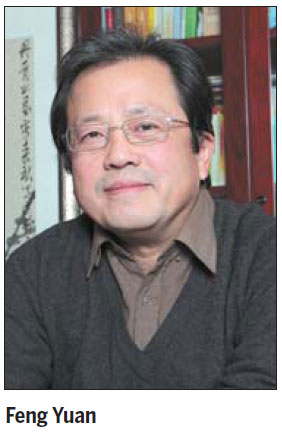 |
| Feng Yuan |
In 1969, fledgling young talent Feng Yuan was sent from Shanghai to Heilongjiang, but the saga only enriched his work, Li Fusheng reports
Feng Yuan is a tireless explorer in the world of art, a Chinese painting master who blazed a way of his own.
Born in Shanghai in 1952, Feng was an avid art lover from childhood and for eight years taught himself to paint pictures.
But art was set aside when the 17-year-old Feng was sent to faraway Heilongjiang province in Northeast China in 1969 as one of the so-called educated youth relocated during the "cultural revolution" (1966-76).
If not for his fascination, Feng like many others might have found himself in another occupation in the cold, barren region.
But the eight years he spent in Heilongjiang before he was admitted to the China Academy of Art in 1978 made him a hardy soul. It also lent him a perspective on people, especially the underclass.
"Art should focus on people, their emotions and their life. Art will become soulless if it puts too much emphasis on form," said Feng.
While steadfast in his beliefs, Feng is open-minded as illustrated in his painting from different periods.
Most of his works in the early 1980s, including a series titled Defending the Yellow River (1984), have heroes as subjects, which is a clear indication of his reflection on history.
Such subjects prevailed in his work until the mid-1980s and the early 1990s when Feng began to explore the possibilities of expressing thoughts and cultural images in abstract expression and symbolism.
In works created in that period, such as the Peking Opera Masks Series (1989), one can see the change from traditional concepts and forms, to random imagination as well as efforts to challenge and detach from the past.
Feng also advocated reforming traditional Chinese painting in his articles written in that period. In A Choice That Does Not Betray, he called for efforts "to reconsider the essential meaning of Chinese cultural traditions" and "reform the spiritual core of traditional Chinese painting to modernize it".
Though Feng did not give up his exploration of such things as abstract expression, in the 1990s signs of a return to the real world and traditional style was evident in his work.
But it was not simply a replication of the early 1980s, rather a creative continuation of it. Telling examples include Sun Yat-sen and China (1996) and Urban Life (1998).
To understand Feng's art, his works featuring people in everyday life are crucial. His accomplishment in portraiture relies on not only his unique perspective and skillful brushwork, but also the realistic concept he has borrowed from the Western world.
Art knows no borders, said Feng. Chinese art also has a lot to offer for its Western counterpart, he said.
"We can compare Huang Binhong's works with Impressionist paintings and we can compare Picasso with Qi Baishi. Such comparisons will surely yield good results."
Professor Feng Yuan is now vice-president of the China Federation of Literary and Art Circles and vice-president of China Artists Association. He before served as vice-president of the China Academy of Art and curator of the National Art Museum of China.
 August Full Moon celebrated across Greece
August Full Moon celebrated across Greece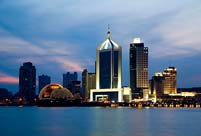 Top 10 Chinese provinces for the well-heeled
Top 10 Chinese provinces for the well-heeled 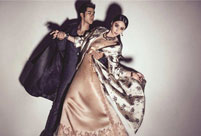 Fan Bingbing poses for Malaysian magazine Citta Bella
Fan Bingbing poses for Malaysian magazine Citta Bella Preview of Moscow air show
Preview of Moscow air show Wild dream: Hell-like training for bodyguard
Wild dream: Hell-like training for bodyguard 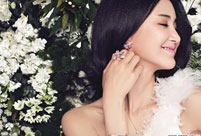 Zhang Xinyi covers COSMOPOLITAN
Zhang Xinyi covers COSMOPOLITAN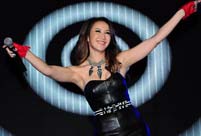 China’s weekly story
China’s weekly story 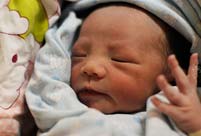 The story of a savior sibling
The story of a savior sibling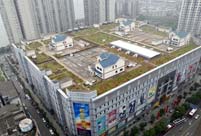 A collection of bizarre rooftop buildings around China
A collection of bizarre rooftop buildings around China 100th birthday of 'Little Mermaid'
100th birthday of 'Little Mermaid' Escort taskforce holds live-fire training
Escort taskforce holds live-fire training Death toll climbs to 76 in flood of NE China's Fushun
Death toll climbs to 76 in flood of NE China's Fushun Nokia's Global Headquarters: visiting a declining empire
Nokia's Global Headquarters: visiting a declining empire 2013 Taiwan Int'l Tourism Expo kicks off in Taipei
2013 Taiwan Int'l Tourism Expo kicks off in Taipei Photo story: Take a gap year
Photo story: Take a gap yearDay|Week|Month